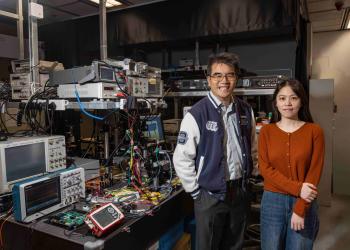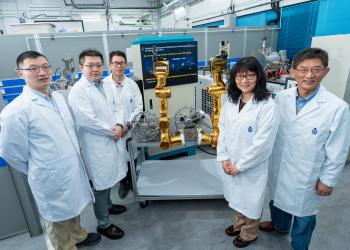HKUST Physicists Discover Novel Materials For Developing Fault-tolerant and Practical Quantum Computers
A research team from the Department of Physics at the Hong Kong University of Science and Technology (HKUST) has achieved a scientific breakthrough by demonstrating that a two-dimensional superconductivity occurs at the interface between two new classes of materials. The groundbreaking discovery in the emerging field of topological superconductors could advance the development of a practical fault-tolerant quantum computer with unusually high computing power, and data storage abilities. The findings were recently reported in a paper entitled “Two-dimensional superconductivity at the interface of a Bi2Te3/FeTe heterostructure” that was published in the prestigious journal Nature Communications.
The research was carried out by a collaborative team comprised of Prof Iam-keong Sou, Prof Jiannong Wang, Prof Rolf Lortz and Prof Kam-tuen Law together with their postgraduate students and postdoctoral associates. They successfully fabricated two materials, Bi2Te3 and FeTe, using a technique called Molecular Beam Epitaxy. The very rare two-dimensional superconductivity that was discovered at the interface between these two novel materials when they are put together occurs despite the fact that neither of them is itself superconducting.
Bi2Te3 belongs to a new class of material called “Topological Insulator”, which behaves as an insulator at its interior while its surface is a conductor. FeTe is a parent compound of another new class of material called “iron-based chalcogenide superconductors”. Under certain conditions, a topological insulator can be transformed to a topological superconductor, with the very desirable property that it conducts electricity with no resistance. Theoretical physicists have predicted that a mysterious quasi-particle called the “Majorana fermion” can be trapped and detected in a topological superconductor.
Prof Sou explained that the successful manipulation of Majorana fermions would facilitate a quantum leap in our computational and data storage abilities. He highlighted that conventional semiconductor-based computers in use today have almost reached their physical limits of computing power and data storage capability. A quantum computer based on the superposition principle in quantum mechanics can increase the capability in computing power and data storage tremendously.
Back in 1937, the Majorana fermion was predicted to exist and has been intensively sought by physicists ever since. A dream computer using Majorana fermions as the basic units is called the topological quantum computer. Majorana fermions are theoretically expected to appear in pairs. Even when one of the paired fermions is modified or damaged, the other could still provide the original information previously stored. This property makes a topological quantum computer very robust against local micro-disturbance and enables it to be fault-tolerant and practical for quantum computation. The topological superconductor developed by HKUST that supports Majorana fermions could lead to the invention of a practical quantum computer.
For media enquiries, please contact:
Ella Au Yeung
Tel: 2358 6306
Email: ellaauyeung@ust.hk










